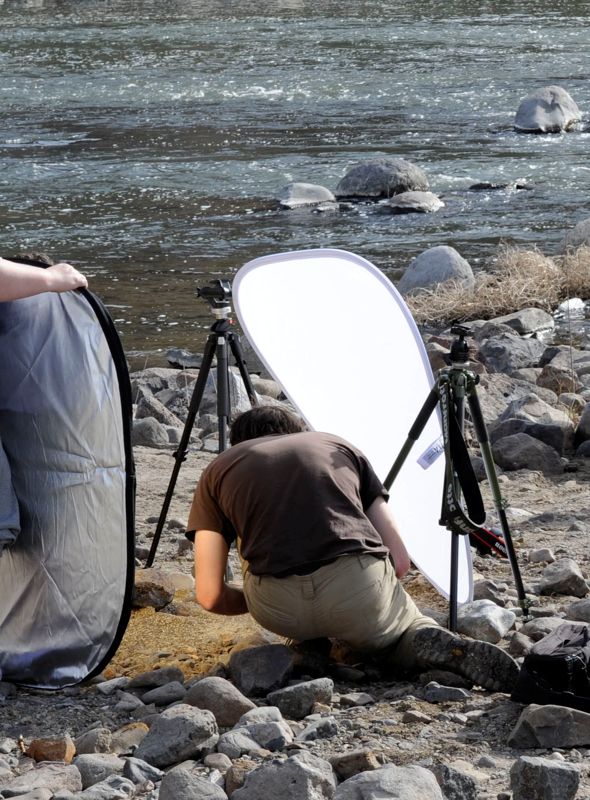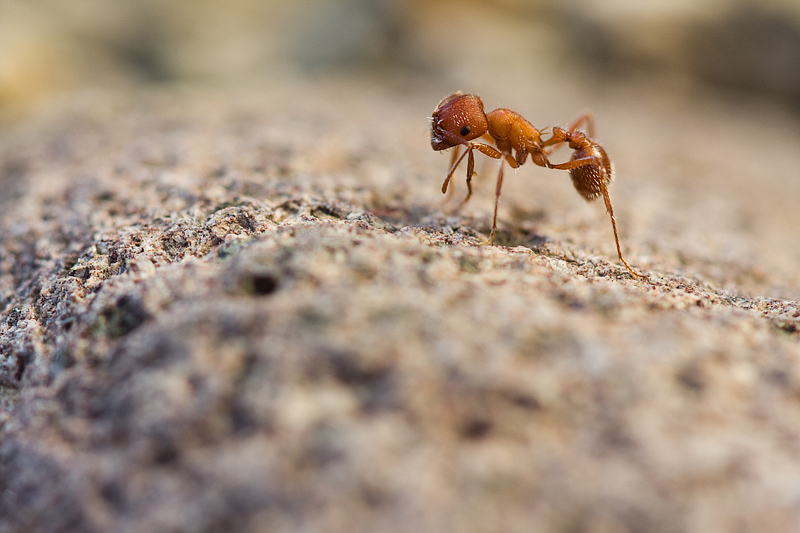This week's assignment is a follow-on to the "diffused light" assignment, during which we emphasized the active modification of light in order to provide pleasing light on our subject. Several of the assignment submissions for the "Diffused Light" assignment also used a reflector in conjunction with the diffuser. Good for you! For those of you that didn't, this assignment introduces another method of addressing both high contrast light and "flat" unflattering light by supplementing it with "reflected light." Much like we use fill flash to fill in harsh shadows on our subjects, we can also use reflected light to fill in harsh shadows. A reflector can be used to reflect light from a strobe onto our subjects, or more simply, can be used to reflect light from a constant source, such as sunlight. One of the advantages of using reflected light in conjunction with a constant light source is that it is much easier to see, and therefore adjust, the amount of fill light we are applying on our subject.
Although it is possible to buy many types of reflectors specifically designed for studio photography (as well as portable "collapsible" reflectors), it is also very easy and cost effective to make our own. Aluminum foil (such as the type used for cooking) can be applied to a cardboard support, to provide a very effective reflector. In addition, a white rigid board such as an inexpensive foam core board, matte board or poster board can make a very effective reflector. You should be aware that if your reflector has a color tint, the light reflected on your subject will be tinted by any color in the reflector. We could use this to our advantage to add a "warm glow" to portraits by using a gold reflector. Unless your goal is to purposely add a color tint to your subject, you should be careful to choose a reflector that is neutral in color, and be aware that even some "white" reflectors will impart a slight warm or cool color cast to your subject if they aren't perfectly neutral. It is also important to note that shinier surfaces (such as aluminum foil) will provide a "harder" light on your subject, with stronger specular highlights, while less reflective surfaces such as poster board or matte board with a "non reflective" surface will provide softer, more diffused light, albeit a little less efficiently. If you are looking for a cost effective "collapsible" solution, these automotive sunshades work well:
http://www.amazon.com/Sopus-Products-Axius-1201006B-Windshield/dp/B001A3KPYM/ref=sr_1_4?s=automotive&ie=UTF8&qid=1270488975&sr=1-4 (Or the equivalent from Walmart, Target, or some other inexpensive store that sells automotive supplies and accessories.)
One advantage of using a diffuser made of white material like several of us used in the "Diffused Light" assignment, is that it can also be pressed into service as a reflector. There are both 1-stop and 2-stop diffusers on the market, with the difference being that a 1-stop diffuser reduces the amount of light on your subject by 1 stop, while a 2-stop diffuser reduces the amount of light that it transmitted through the material by 2 stops. The corollary to this is that the 2-stop "diffuser" will work better as a reflector, since it will reflect back twice as much light toward your subject (when used as a reflector) than the 1-stop panel. I often use the two panels in conjunction with one another, with one panel as a diffuser and one as a reflector. Why use a reflector after you have gone through the trouble of diffusing the light? Because it allows you to control the direction and amount of light on your subject to provide soft "modeling" of the features and impart a 3-dimensional effect to the image.
I've included an image below of a diffuser and reflector being used in conjunction with each other. The diffuser is of course being used to soften the harsh mid-afternoon light, while the gold reflector is being used to add warm golden light to the subject and provide some "modeling" of it's features.

1-stop Westcott Diffuser in conjunction with 2-stop diffuser covered by gold/silver reflective slip cover (gold side towards the subject)
It might seem like a bit of overkill, but the NANPA student in this image was able to produce a wonderful series of ant images using the "controlled" lighting from the reflector. Note how he was able to bring out the detail in the hairs of the ant with the directed light from the reflector.

Photographed by Ethan Welty, 2010 NANPA College Photography Scholarship Recipient
The assignment for the week of 5 - 11 April 2010 is "Reflected Light." I encourage you to use a "homemade" reflector to supplement the light on your subjects. Please upload your images to the "Reflected Light" album in the weekly assignment category of the gallery no-later-than midnight, Mountain Time (GMT -07:00) on Sunday, 11 April 2010.
I will look forward to seeing your images.
Keith